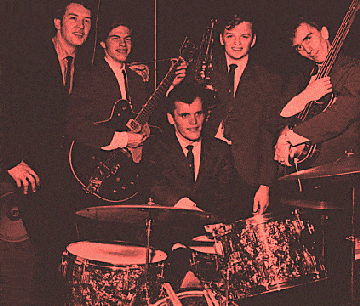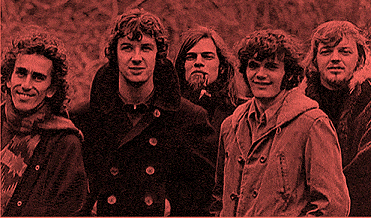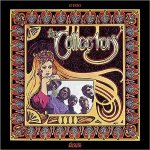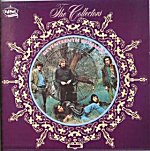 In the spring of 1967, Vickers was asked to put together a house band at the Torch Cabaret in Vancouver. Along with Claire Lawrence on horns, they recruited guitarist Terry Frewer, drummer Ross Turney and Brian Newcombe on bass. Within a couple of months, fellow Classics member Glenn Miller replaced Newcombe on bass and Bill Henderson, a student at UBC, replaced Frewer on guitars, and with Vickers now handling vocals, they matured their sound, they gradually replaced the R&B sounds and the covers with their own material, and graduated out of that one club and began playing the rest of the west coast, on both sides of the border. They did particularly well in California, where audiences were warm to the complex arrangements mixed with harmonies and extended solos and musical ad-libs. They signed with Tom Northcott and New Syndrome Records, but Vickers, Lawrence and Miller were still under contract to The Classics’ old Stateside Valiant Records. It was Valiant’s execs that gave the group their name, after giving them the choice of “The Collectors” or “The Connection,” after they’d recorded a handful of tracks in Vancouver. They released the folk meets psychadelia single “Make It Easy,” with “Don’t Feel Bad” as the b-side that summer. “Looking At A Baby” b/w “Old Man” was next up shortly after, which cracked the top 40. Its followup was “Fisherwoman,” which peaked at #15 at home, a couple of months later. They fell under the Warner Bros banner after they bought out Valiant Records. Their fourth single, “Fat Bird” was released while the band was in Los Angeles again wrapping up work with producer Dave Hassinger. Although he initially had the band in mind for some session work under the guise of his project The Electric Prunes, in which Henderson ended up playing on their MASS IN F MINOR lp. The Collectors’ self-titled album hit the shelves in the fall of ’67 and featured the first single “Lydia Purple,” penned by Don Dunn and Lynda McCashen, which got huge airplay at home. But a mix of experimental studio techniques and attempts at translating the California flowers and beads scene to a Canadian flowers and sea shells vibe didn’t necessarily make for great album sales, according to the label reps. With “What Love (Suite)” taking up the whole second side, some people just didn’t get it and the record stalled before cracking Billboard’s top 40. This is despite the fact the song was actually a hit in parts of Europe. Still, the album mixed a good deal of classical influences into the melodies and with good vocal harmonies, later became recognized by the critics as a groundbreaking record that attempted to cross several musical boundaries. Their follow up, again recorded in LA came in the form of GRASS AND WILD STRAWBERRIES in the fall of ’68. A collaboration with the poet and playwrite George Ryga, the album was based on his stage play of the same name. The songs were shorter, more plentiful, a little more toned down and slightly less out in left field, During this time, they’d by now contributed to the soundtracks of three Canadian films, “Don’t Let The Angels Fall,” “Canada The Land,” and “The Land.” After parting ways with Warner Bros, they landed a new deal with London Records by late ’69. But by this time Vickers was spending much of his time doing solo shows, and decided to leave the group. Henderson took over the vocal duties, and their new label released a pair of singles by the summer of 1970, “I Must Have Been Blind” and “Sometimes We’re Up.” The b-sides were parts one and two of “Beginning,” and the proposed new album was set to be an epic saga concept type record, which never materialized. They were invited to write music for the Canada Pavilion at EXPO 1970 in Osaka, Japan that year, but declined the offer, as by this point the remaining members had agreed to try something different, and Henderson, along with Miller, Turney and Lawrence reinvented themselves as Chilliwack that same year. Through various incarnations over the years, they pumped out such classics as “There’s Something I Like About That,” “California Girl,” “Watcha Gonna Do” and “Fly At Night,” among countless others. In 1987 a renewed interest in The Collectors came about after Edsel Records in the UK released a compilation of the band’s two albums, mixed in with their pre-lp singles, 17 tracks in all. Four years later, they were featured on a compilation documenting the West Coast scene’s evolution – The History of Vancouver Rock & Roll. In 2008 the original two albums were re-released on compact disc through Universal Music.
|

 making them more palatable to the general public. The single “Early Morning” was on the stands early the next year and other cuts like the title track, “Teletype Click,” and “Seventeenth Summer” showcased the band’s development and maturity.
making them more palatable to the general public. The single “Early Morning” was on the stands early the next year and other cuts like the title track, “Teletype Click,” and “Seventeenth Summer” showcased the band’s development and maturity.



